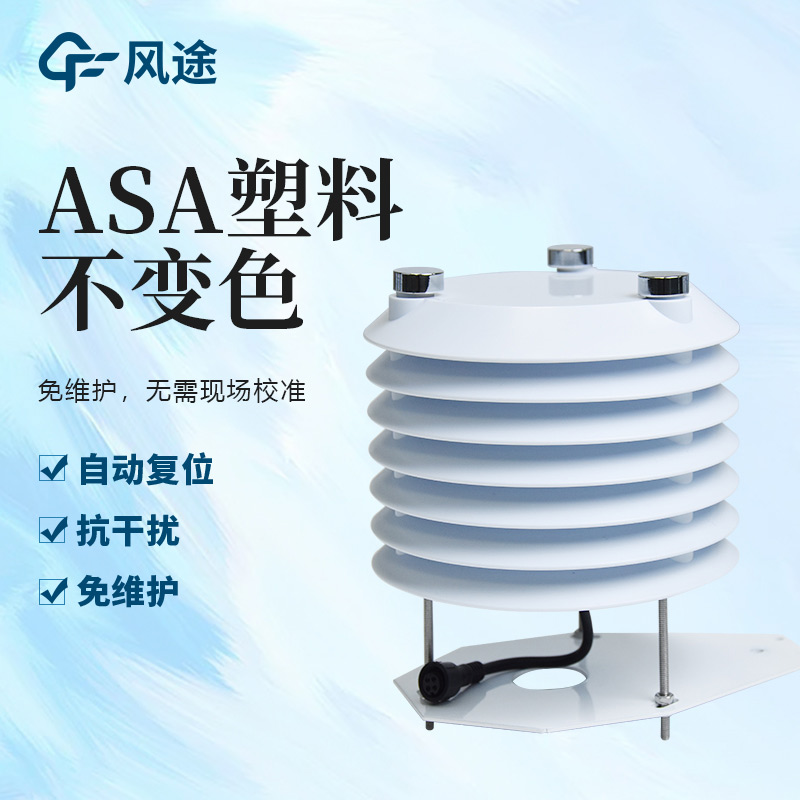Tianyi Sensor IOT Technology Co., Ltd
Sales Manager:Ms. Emily Wang
Cel,Whatsapp,Wechat:+86 15898932201
Email:info@fengtutec.com
Add:No. 155 Optoelectronic Industry Accelerator, Gaoxin District, Weifang, Shandong, China

Sales Manager:Ms. Emily Wang
Cel,Whatsapp,Wechat:+86 15898932201
Email:info@fengtutec.com
Add:No. 155 Optoelectronic Industry Accelerator, Gaoxin District, Weifang, Shandong, China
time:2025-04-17 09:49:33 source:Weather Station viewed:176 time
In today's society, with the acceleration of the processes of industrialization and urbanization, air quality issues have received increasing attention from people. There is a wide variety of pollutants in the air. Among them, the "four gases" (carbon monoxide, sulfur dioxide, nitrogen dioxide, and ozone), the "two dusts" (PM2.5 and PM10), and noise have a significant impact on air quality.
Carbon monoxide is a colorless and odorless toxic gas, mainly derived from vehicle exhaust emissions, industrial waste gas emissions, etc. It can affect the oxygen transportation in the human body and pose a threat to human health. Sulfur dioxide and nitrogen dioxide are mostly produced by the combustion of fossil fuels. They not only irritate the respiratory tract but also participate in the formation of acid rain, thus damaging the ecological environment. When the concentration of ozone is too high at low altitudes, it has a strong irritating effect on the human respiratory system and eyes. As inhalable particulate matters, PM2.5 can penetrate deep into the human lungs and even enter the blood circulation, triggering various diseases. PM10, on the other hand, can cause problems such as respiratory discomfort. Although noise is intangible, it disturbs people's daily life, work, and rest. Long-term exposure to a high-noise environment can cause damage to hearing and other aspects.
In order to effectively monitor these key factors that affect air quality, the Air quality sensor has emerged as the times require. This sensor has a high integration level and is capable of simultaneously monitoring parameters such as PM2.5, PM10, carbon monoxide, sulfur dioxide, nitrogen dioxide, ozone, and noise in real time. It adopts integrated sensing technology and has the characteristic of strong anti-interference ability. It is equipped with a watchdog circuit and has an automatic reset function, which can ensure the stable operation of the system. The standard output signal of this sensor is an RS485 communication interface (MODBUS protocol), and it can also be optionally equipped with 232, USB, and Ethernet interfaces, which is convenient for real-time data reading. Moreover, this sensor is made of ASA engineering plastic material, making it suitable for outdoor environments, and it will not change color even after years of use.
The Air quality sensor has been widely applied in many fields, such as smart agriculture, meteorological monitoring, urban environmental monitoring, wind power generation, maritime ships, aviation airports, bridges, and tunnels. It provides us with accurate and timely air quality data, which helps relevant departments formulate scientific and effective environmental protection policies and take targeted pollution control measures. It also enables the public to understand the air quality around them in real time and take preventive measures in advance.

Agriculture, as the foundation of human survival, is intricately linked to the weather. Weather conditions profoundly influence every aspect of agricultural production. During the sowing stage, seed germination requires suitable accumulated temperature, typically above 10°C. If the temp...
A Portable Weather Station is a device that can be carried around and automatically complete meteorological data collection, mainly used for meteorological monitoring in field, emergency and other scenarios. It integrates the core functions of traditional weather stations in a compact structure, and...
Microwaves refer to electromagnetic waves with frequencies ranging from 300MHz to 300GHz and wavelengths from 1 millimeter to 1 meter. Due to their high frequency and short wavelength, they have strong directivity and penetrating power, enabling stable propagation under different meteorological cond...
This Portable Weather Station features portability, ease of use and high measurement accuracy. Integrating multiple meteorological elements, it is a movable observation system. Adopting a new-type integrated structural design with excellent craftsmanship, this design not only greatly simplifies the...